Togo
Things to Do
Lomé
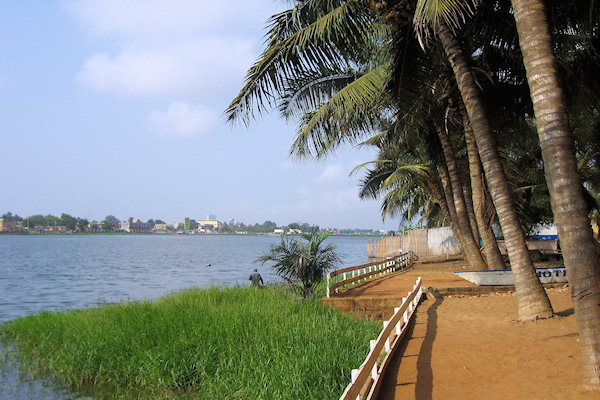 |
|||||
Lomé was once a city that claimed to be the Paris of West Africa, and it's easy to see
how attractive it was in its heyday
There is still real charm to its broad boulevards, palm-fringed beaches, craft markets and full-on
nightlife.
The city's name comes from alomé - the Ewe name for the trees that produce chewing sticks,
which used to be abundant here
Located 200 km from Accra and 150 km from Cotonou, Lomé is an important port, including a free trade
zone opened in 1968. It exports phosphates, coffee, cocoa, cotton and palm oil, much of the transit
going to the neighbouring countries of Ghana, Mali, Niger and Burkina Faso.
The port also houses an oil refinery.
Grand-Marché
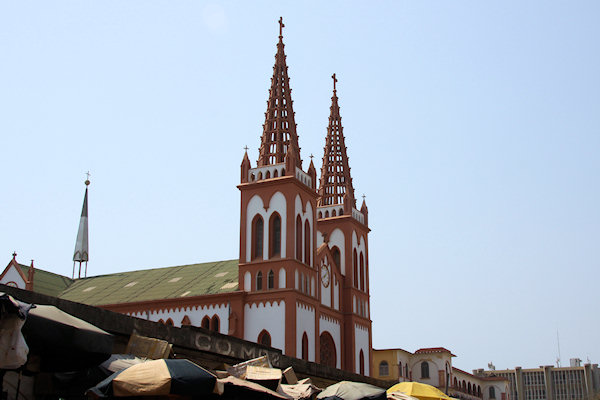 |
|||||
The German Cathedral in the centre town is the suitable place where to begin the visit of
the city. Its nicely painted , its frontage and its inside, its benches out of wooden carved and its
frescos representing of the African saints are alive memories of the colonial inheritance of Togo.
Very close to the Cathedral the large market of Lome is, where the majority are held of the daily
trade.
This building of two stages occupies a whole block of houses in the city and you will find there
practically all. Most of the trade is directed by the women in traditional behaviours with the colors
sharp. The women mainly dominate the domestic economy of the country.
It is absolutely necessary that you assist this market. It bubbles of vitality and energy. The hubbub
of the voices mixes with the sound with the recorded African music.
There are children everywhere, who help their mother or who play in crowd: it is an alive table of the
urban activity.
The activities extend out of its wall In the close streets, hawkers and selmen devote themselves to an
animated trade and much carry their "shop" on the head.
Guérisseur
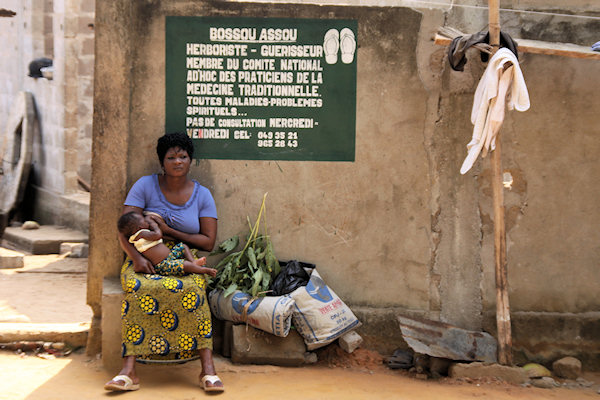 |
|||||
Even today, Western medicine is struggling to make inroads in rural areas where many people prefer
the advice and price of the local witch doctor - called Guérisseur in France.
Whatever name these people go by they all have the ability to cure a range of physical, mental and
spiritual illnesses using a mixture of natural medicines and supernatural interventions.
The supernatural aspect is the key, because throughout Africa illness is traditionally thought to be
caused by supernatural powers, magic and even pure sorcery.
In order for an illness to be cured it's necessary to know how it was caused in the first place, and for
this a priest or medium is consulted.
Once the cause of the illness is identified, the healer can then consult the spirits and ask their
advice on creating the necessary medicine or religious ceremony to cure the patient; after which the
sometimes violent treatment can begin.
Most villages have at least one traditional heale;they are usually very open about what they do and
often happy for you to watch them at work - even when things move decidedly into the realms of magic
and ghostly interventions.
Fetisch market
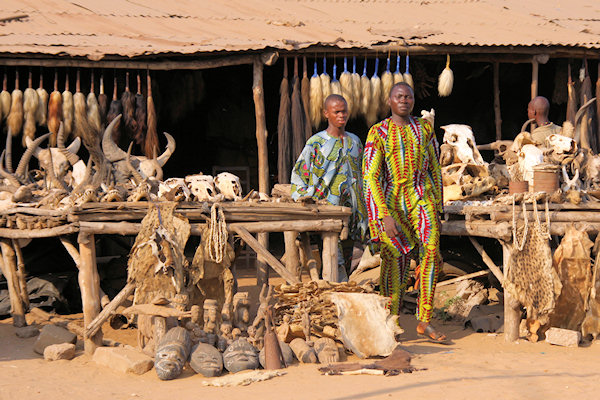 |
|||||
It is the place where one can observe the products of Togolese religion and of traditional medicine.
Feathers of birds, craniums of animals, skins of animals, grasses and all kinds of things which are
supposed being equipped with magic qualities are reproduced on the counters, as well as small carved
fetishes.
The latter would have the capacity to protect the individuals from the bad fate and, according to the
salesmen, their effectiveness is guaranteed.
The market with the fetishes is also the place where to find excellent samples of figurines Ewe honouring
the twins which the tradesmen usually keep hidden.
You can find excellent memories there, but it is necessary to haggle over because the first price is
generally very high.
Klouto
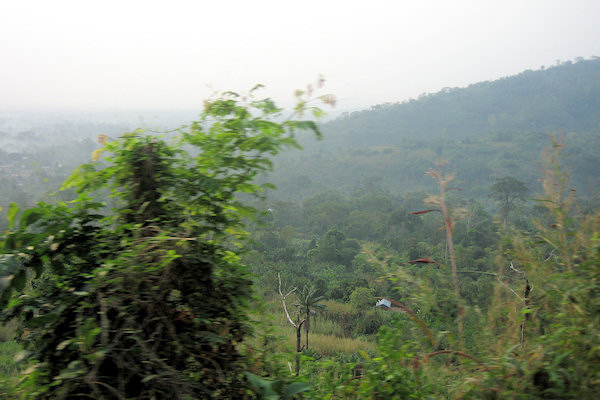 |
|||||
Leaving Lomé we drove North through Togo's coffee country, heading to Klouto.
There is a Togolese butterfly specialist living there, Mr Prosper, and after a few days in
exceptionally hot and humid coastal weather in Lomé, walking around in the cooler highlands with
butterflies fluttering around is just perfect.
In spite of the intense agricultural development, the area of Kpalimé always preserves some of the
prettiest forests of Togo where the mahogany trees abound, the wawas and irokos.
Many natural cascades will enable you to refresh yourselves at the edge of water.
See my
Special Items for more picture's of Birds/Butterfly and Moths.
Voodoo dance
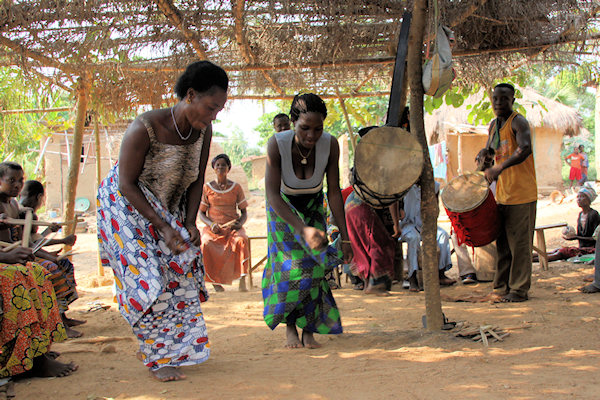 |
|||||
Voodoo originally began in the south of Togo and Benin and it is still the religion that is most
firmly embedded in the local culture.
Evidence of this is seen everywhere with temples, altars and fetishes scattered across the countryside
and in the villages.
Whenever there is a special occasion the voodoo initiates of the village, often more than a hundred
people are led by the fetisher, a voodoo high priest. They meet and offer collective praise and
sacrifices at the altars of the gods and divinities.
After the ceremony the women start chanting and, accompanied by the rhythm of the tam-tam drums,
others start to dance. As the music speeds up and becomes more and more frenzied some participants fall
into a deep trance. On a physical level they are in a catatonic state, with very strong muscular spasm
and insensitivity to pain. When in a trance, a state of altered consciousness, the participants
communicate directly with their ancestors and the spirits.
Badou
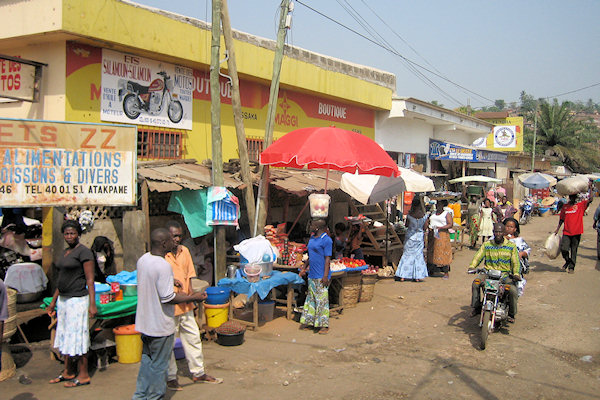 |
|||||
This sleepy border town is lost somewhere in the northwest of coffe country, on roads with
a penchant for hairpins
If you visit Badou, do not fail to see one of the wonders of Togo - The Akloa Falls -
a fall of milky water 100m which precipitates of a granite cliff in a basin with deepest of the forest.
It will be necessary for you to carry out a 40 minutes walk on narrow paths which curve on the hills
through the cocoa plantations before penetrating in the forest.
The road is a little tiring but it is worth largely the sorrow of it.
Sokodé (Kotokoli-tribe)
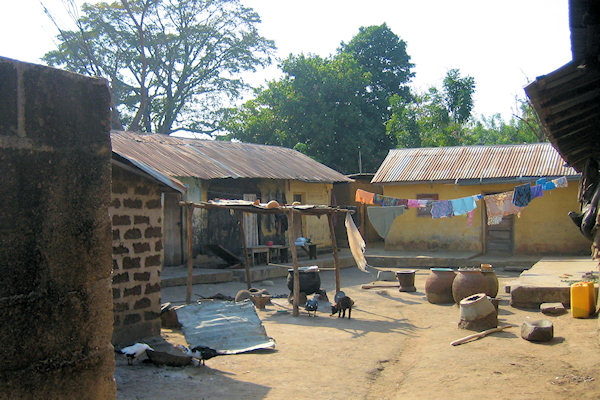 |
|||||
The Kotokoli live in the West African countries of Togo, Ghana and Benin.
In Togo, they are concentrated in towns such as Sokode, which is located along one of Togo's
ancient caravan routes. The settlement was given the name Sokode, which means "to close,"
because the town was frequently isolated by barriers built by tribal groups trying to control the
caravan trade.
The Kotokoli emigrated from what is now Burkina Faso into the Sokode region during the 1600's and 1700's.
They arrived as a confederation of Gurma chiefdoms. Even today, the Kotokoli chief, or Uro, still
resides in Sokode.
In time, the Kotokoli developed a reputation for sharp and perhaps underhanded dealings in trade. The
local merchants became annoyed and began calling them koto kolim, which means "they give and
take back again."
Eventually, the group became known as the Kotokoli. They are more properly known, however, as the
Tem or Temba, because they speak Tem, a Niger-Congo language.
The Kotokoli are primarily farmers, growing sorghum and yams as their staple crops.
Each local community has a ritual headman (usually the oldest in the lineage), who has the responsibility
of maintaining good relations and social order among his people. The headman answers to the district chief,
who answers to the Uro (supreme chief).
It is possible to to witness a traditional Tem Fire Dance, in one of te surrounding villages.